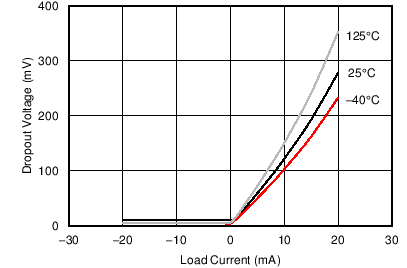ZHCSCT4A September 2014 – January 2017 REF1925 , REF1930 , REF1933 , REF1941
PRODUCTION DATA.
11 Power-Supply Recommendations
The REF19xx family of references feature an extremely low-dropout voltage. These references can be operated with a supply of only 20 mV above the output voltage. For loaded reference conditions, a typical dropout voltage versus load is shown in Figure 53. A supply bypass capacitor ranging between 0.1 µF to 10 µF is recommended.
 Figure 53. Dropout Voltage vs Load Current
Figure 53. Dropout Voltage vs Load Current